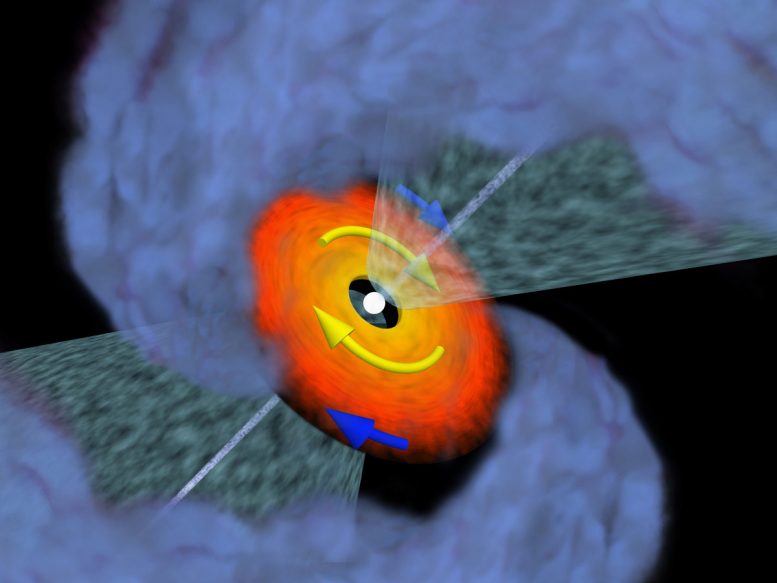
Using the Atacama Large Millimeter/submillimeter Array, astronomers have discovered the youngest disk around a protostar to date.
Planets form in disks around their host protostar, but when and how disks form is still an unanswered question. ALMA observations by a team of astronomers led by Nadia Murillo and Shih-Ping Lai [1] have found the youngest disk around a protostar to date, at an earlier stage than predicted by most models.
The material in our own Solar System follows Kepler’s Laws, with the inner planets orbiting the Sun faster than planets further out. This is what is usually referred to as Keplerian rotation. Keplerian disks, that is disks with Keplerian rotation, are very likely to eventually form planets in stable orbits. Discovering these types of disks in the very early stage when the protostar is still deeply embedded in its natal cloud provides insight into the ability of these systems to form planets.

ALMA was used to observe VLA1623, a triple protostellar system located in the rho Ophiuchus star-forming cloud. A disk structure was observed towards VLA1623A, a very young source still wrapped in its cocoon of dust and gas. Thanks to ALMA’s capabilities, analysis of the gas in the disk revealed its motion to be Keplerian and to have a radius of roughly 5 times the radius of Neptune’s orbit [2], but with a central protostar mass of only 0.2 times our Sun’s mass. This shows that the protostar is still very young and growing.
Models and simulations have previously predicted that Keplerian disks cannot form in the earliest phases of star formation. However, the discovery of VLA1623A’s big Keplerian disk proves otherwise, suggesting that other factors may play a role in disk formation. This is in line with more recent studies that suggest that misalignment of magnetic field and rotation axes or turbulence may enhance early disk formation, producing disks of 100 times the Earth-Sun radius or larger. The recent evidence that nearly all stars, including multiple stars, have at least one planet is in line with our observed result that nature finds a way to make protoplanetary disks.
Notes
[1] ALMA Cycle 0 data were obtained by Nadia Murillo and Shih-Ping Lai through East Asia partnership while Nadia Murillo was a Master student at National Tsing Hua University, Taiwan.
[2] The radius of Neptune’s orbit around the Sun is about 30 times that of the Earth.
Reference: “A Keplerian disk around a Class 0 source: ALMA observations of VLA1623A” by Nadia M. Murillo, Shih-Ping Lai, Simon Bruderer, Daniel Harsono and Ewine F. van Dishoeck, 13 December 2013, Astronomy & Astrophysics.
DOI: 10.1051/0004-6361/201322537
arXiv:1310.8481
Never miss a breakthrough: Join the SciTechDaily newsletter.